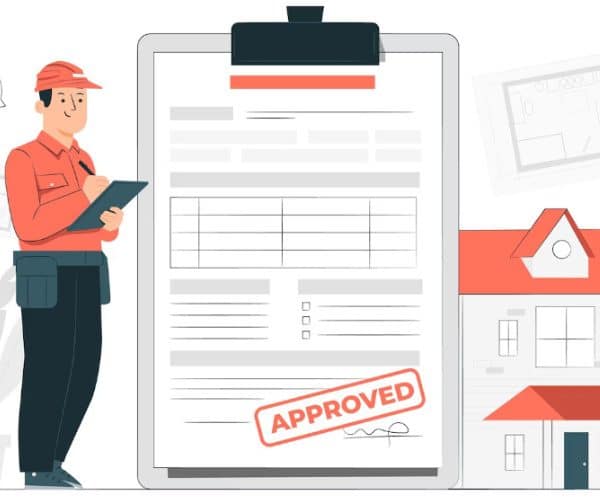An inventory management system performs functions like managing inventory, tracking product movement and orders, etc.
The streamlining of inventory management also ensures that the right amount of inventory is available at the warehouse for order fulfillment. For this, there are multiple types of inventory management systems.
Types of Inventory Management Systems
The following are the major types of Inventory Management Systems:
Manual/Spreadsheet Inventory Management System
A Spreadsheet Inventory Management System is one that operates using MS Excel or Google Sheets. Inventory data on these programs is entered manually.
Even though this Inventory Management System is simpler to operate but has some downsides. As it is operated manually, human error can cause inaccuracies in data. These inaccuracies can snowball into costly challenges.
Automated Inventory Management System
An automated inventory management system is designed to cater to the shortcomings of a manual inventory management system and more. This system can update inventory data automatically as the inventory changes.
An automated inventory management system can decrease the inaccuracies in inventory data, which helps streamline business operations. Companies may take some time to set up this system, but once this stage is crossed, inventory management becomes smooth.
Accounting and Inventory Management System
To set up an accounting and inventory management system together, companies need integrated cloud-based software. Even though these two are distinct features, integrating them can be beneficial for businesses.
This is because businesses can track inventory movement and financial transactions from the same place. Both features can then be managed in a synchronized way.
Warehouse Management System
Warehouse management systems are designed to help businesses in organizing and managing their inventory. From the point the inventory is received at the warehouse to the point it leaves for the customer, a WMS can streamline all the processes.
A disadvantage of warehouse management systems is that they may lack key inventory management features, like purchasing, etc.
Barcode Inventory Management System
A barcode inventory management system can be used to track products efficiently. Barcodes are printed on the product packaging, which can be read by a barcode scanner.
It improves the supply chain visibility because barcodes can be read and updated by multiple parties in real-time. For example, an in-transit inventory can be tracked by the buyer and the seller in real-time.
3PL Inventory Management System
In 3PL logistics, the warehouse and inventory management of a company is outsourced to a third party. 3PL providers use an exclusive 3PL inventory management system.
A key feature of this system is that it provides multiple warehouse management and multi-channel order fulfillment. This means that third parties don’t need separate software to manage warehouses and inventories of multiple businesses, as all can be operated using a single system.
Despite being of several types, there are some common features of an inventory management system.
Common Features of an Inventory Management System

Below are some of the common features of an Inventory Management System:
Inventory Tracking
Inventory tracking is an integral feature of an inventory management system. This gives businesses real-time visibility of the inventory. Inventory tracking takes place at almost every step of inventory management.
Inventory tracking can also help in automated reordering. This happens when the inventory management system detects that a certain product is low on stock. It then automatically places the order with the supplier once the reorder level is reached.
Order Management
Another core feature of an inventory management system is order management. Inventory management system can manage the orders that are placed by the customers and the orders that the business has to place with the suppliers.
Manually managing both these types of orders can be challenging. Some inventory management systems have a feature that can automatically send or receive purchase orders as well.
Inventory Alerts
The inventory management system also sends inventory alerts to the businesses. For example, if a product’s stock has reached the minimum inventory level, the system sends alerts notifying the staff to place the next order.
This is when the automated reordering feature is not activated, and the business wants to manually assess if another order has to be placed.
Inventory Optimization
Overall, inventory optimization is a common feature of all inventory management systems. It gives more control to the business on how they want to manage the inventory.
It does this by providing customized reports to the business staff.
Let’s now discuss some benefits of the inventory management system for businesses.
Why Should Businesses Use an Inventory Management System?

An inventory management system can give the following benefits to businesses:
Increased Order Fulfillment
Order management and fulfillment can be simplified using an Inventory Management System. This is because it helps businesses to prevent stockouts and maintain the stock of most selling products.
When a business has enough stock at the warehouse, it can fulfill customer orders without unnecessary delays.
Accurate Inventory Forecasting
An inventory management system operates on inventory data, which means that it stores historical data. Based on this, it can accurately forecast inventory needs.
This is better than forecasting inventory by merely speculating on market trends. Using relevant data, businesses can purchase products in the amount that can convert into sales and generate profit.
Reduction in Inventory Storage Costs
Inventory stored in a warehouse costs a business in terms of storage costs, energy bills, etc. This is recovered from the revenue generated when the products are sold.
If there is more than the required inventory in the warehouse, the inventory holding cost increases. An inventory management system can save businesses money by storing an optimal amount of inventory.
Improves Customer and Supplier Relationships
When the orders are fulfilled on time and with accuracy, businesses can establish better relationships with customers.
On the other hand, businesses that use a reliable Inventory Management System can give their forecast data to their suppliers. This tells the suppliers how much inventory the business will require and when.
This way, the suppliers can schedule their operations accordingly.
Increased Understanding of Profitability
The data in the inventory management system is broken down into different sections and categories. For example, the data for each product can be separated. This can be used to assess how much was invested in this product and how much profit it generated.
This way, businesses know which product is generating the most profit so that they can focus more on it.
Conclusion
Establishing an inventory management system is not just about purchasing software and setting it up. It includes synchronizing it with the inventory needs so that it performs according to the requirements.
Its multiple features can be used to create efficient inventory operations.



